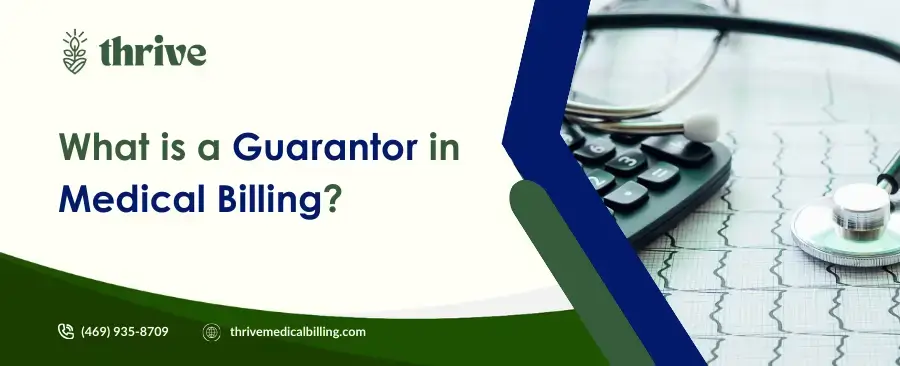In the world of medical billing, acronyms are everywhere. You’re probably familiar with EOBs (Explanation of Benefits), but what about EORs? If you've come across the term “EOR,” you're on your way to understanding a crucial part of the revenue cycle. While EOR is often used alongside the more common ERA (Electronic Remittance Advice), both terms refer to the same thing: a document from the insurance payer explaining how a claim was processed.
In this guide, we’ll break down what ERAs/EORs are, why they matter, and how they can improve your revenue cycle.
What is an EOR (or ERA) in Medical Billing?
An Explanation of Remittance (EOR), or more commonly an Electronic Remittance Advice (ERA), is an electronic report sent by an insurance company to a healthcare provider. This report explains how one or more medical claims were handled—what was paid, what was denied, and why.
ERAs are the digital version of the old paper-based Standard Paper Remittance Advice (SPRA). Because they’re electronic, ERAs are faster, easier to use, and can be imported directly into your billing system—saving time and reducing errors.
Some payers (especially in auto or workers' compensation insurance) use the term “EOR,” but in most cases, the terms EOR and ERA are interchangeable.
EOR vs. EOB: What's the Difference?
This is a common area of confusion, but the distinction is simple:
- EOR/ERA (Explanation of Remittance):
Sent to the provider. It shows how much was paid, what was denied, and the reasons why. - EOB (Explanation of Benefits):
Sent to the patient. It explains how the insurance benefits were applied, what was covered, and what the patient owes.
In short:
The ERA is for your billing team, and the EOB is for your patient. Both cover the same claim but are meant for different audiences.
Experience the Best Medical Billing Services
Discover how our experts can improve your revenue cycle management
What’s Included in an ERA or EOR?
ERAs contain a lot of important information that your billing team relies on. Here are the key elements:
1. Payer Information
Identifies the insurance company sending the payment.
2. Payee Information
Shows who is receiving the payment—usually the healthcare provider or clinic.
3. Patient and Claim Details
Lists the patient’s name, policy number, and information about the medical claim, including the services billed.
4. Billed vs. Paid Amounts
Shows how much was billed and how much the payer approved or paid.
5. Adjustment Codes (CARCs and RARCs)
These codes explain why a payment was reduced, denied, or changed.
- CARCs (Claim Adjustment Reason Codes) explain adjustments.
- RARCs (Remittance Advice Remark Codes) give extra details.
6. Patient Responsibility
Shows the amount the patient owes, including copayments, deductibles, and coinsurance.
Understanding these sections is essential for proper payment posting and denial follow-up.
Why Understanding CARCs and RARCs Is So Important
These standardized codes provide insight into why claims aren’t fully paid. They help your team:
- Catch patterns in denials
- Identify errors in coding or documentation
- Take action to prevent future denials
- Submit appeals quickly and accurately
Example:
- CARC 97: “Payment is included in the allowance for another service.”
- RARC M15: “Separately billed services have been bundled.”
Knowing what these mean lets your team respond faster and more effectively.
Benefits of Using ERAs in Medical Billing
Switching to ERAs offers more than just convenience. Here’s how they can transform your billing process:
1. Faster Payment Posting
ERAs can be automatically imported into your billing software, eliminating the need to enter payments manually.
2. Fewer Errors
Automation reduces mistakes in payment posting and improves accuracy in your records.
3. Streamlined Denial Management
Denial reasons are included in the ERA, so your team can act on them immediately—no waiting or guesswork.
4. Better Cash Flow
Faster posting and quicker denial resolution means money reaches your account sooner.
5. Lower Administrative Costs
Less paper, less data entry, and less time spent tracking down payment information equals lower overhead.
6. Smarter Decision Making
With detailed remittance data, you can identify recurring issues, problematic payers, and opportunities for process improvement.
Common Challenges with ERAs—and How to Overcome Them
While ERAs are powerful, they do come with a few challenges:
1. System Compatibility
Problem: Not all billing systems handle ERAs well.
Fix: Use modern software or clearinghouses that support standard ERA formats.
2. Complexity of Codes
Problem: Adjustment codes can be confusing.
Fix: Create a reference guide for your team and provide ongoing training.
3. Incomplete Data from Payers
Problem: Some payers may send incomplete ERAs.
Fix: Work with payers and clearinghouses to ensure full data compliance with HIPAA 835 standards.
How to Make the Most of ERAs
Here are some tips to get the best results from electronic remittance processing:
- Enroll with All Payers: Make sure you’re set up to receive ERAs from all your insurance partners.
- Automate Payment Posting: Let your software handle it, but flag exceptions for manual review.
- Reconcile Daily: Match your ERA records with your actual bank deposits every day.
- Review Denial Reports: Track denial trends regularly and identify areas for improvement.
- Keep Your Team Trained: Adjustment codes change, and payers update rules often—keep your staff up to date.
The Future of ERAs in Medical Billing
The move toward real-time payment information is gaining traction. In the future, ERAs may become even faster, with artificial intelligence helping practices:
- Predict denials
- Automatically appeal decisions
- Suggest coding corrections in real time
Technology is moving fast—and mastering ERAs now sets you up for long-term success.
Conclusion: From Data to Dollars
ERAs aren’t just digital receipts—they’re essential tools that can drive your revenue cycle forward. With faster payments, fewer errors, and better insights into payer behavior, your practice can:
- Get paid quicker
- Reduce denied claims
- Save time and money
- Make smarter business decisions
If you’re still relying on paper remittance or haven’t fully embraced ERAs, now is the time. It’s not just about keeping up with technology—it’s about using it to build a healthier, more efficient billing process.
Need help implementing ERAs or optimizing your billing process?
Thrive Medical Billing is here to support you every step of the way. Let’s streamline your revenue cycle together.
Experience the Best Medical Billing Services
Discover how our experts can improve your revenue cycle management








